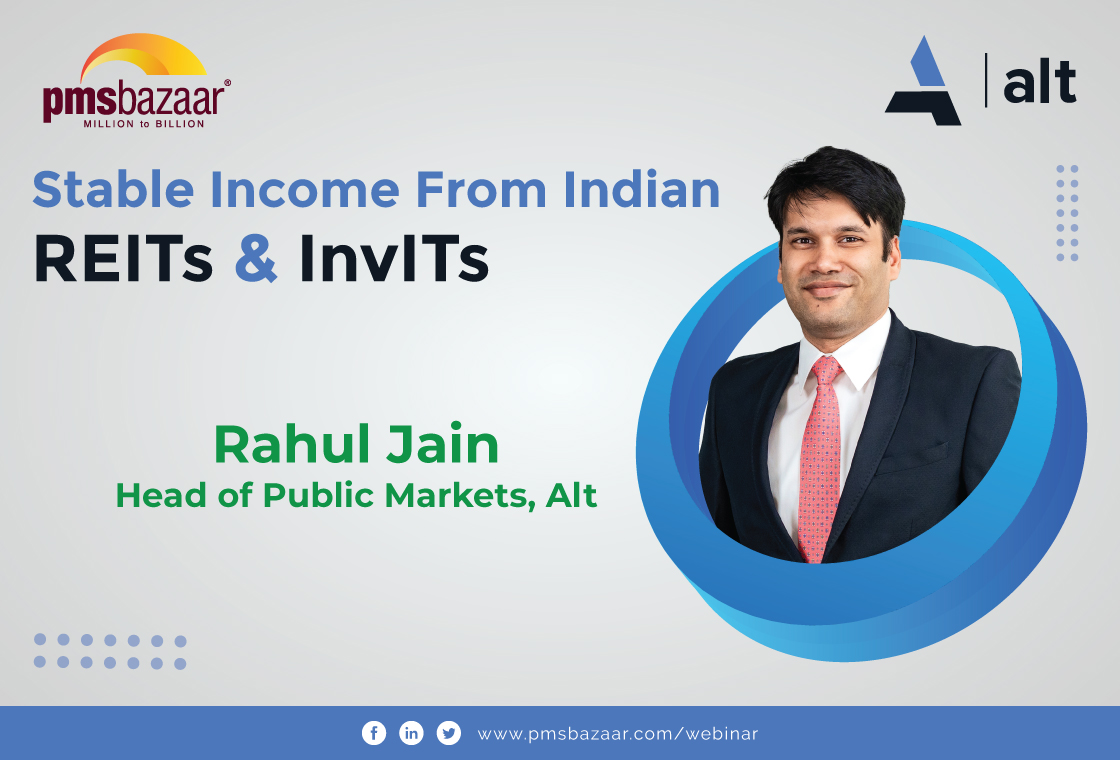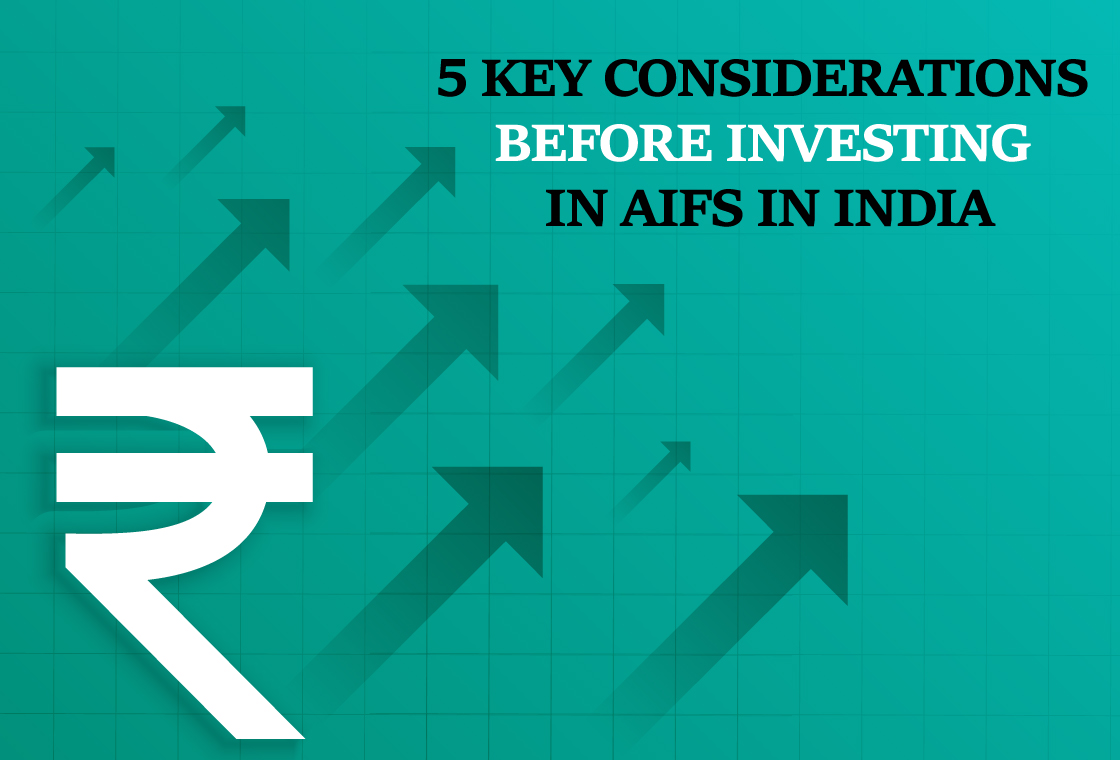PMS Bazaar’s webinar on Real Estate explained the transition of the sector over the years and the diverse range of investment opportunities it offers, catering to varying risk appetites, with consistent returns.

PMS Bazaar conducted a webinar titled “Real Estate in Wealth Creation: Harnessing India’s Growth Potential,” featuring Akshat Pandya, Head- Real Estate Investment Advisory at Aditya Birla Sun Life AMC. The webinar focused on the evolution of India's real estate funding sector over the past two decades.
Key points of discussion during the webinar:
- Early Stages & The First Boom (2004-2012)
- Regulatory Changes & Market Maturity (2013-2020)
- Investment Opportunities & Market Trends (Post-2020)
- The Role of NBFCs & Consistent Returns
- Addressing Risks
- Evolving Credit
Early Stages & The First Boom (2004-2012)
Akshat Pandya gave a brief background about the sector. In the early 2000s, India's real estate funding sector was in its infancy, with limited participation from financial institutions. A significant shift occurred in 2005 when HDFC launched India’s first real estate private equity fund. This marked the beginning of a boom period from 2004 to 2007, characterised by substantial growth, soaring property prices, and a surge in developers entering the stock market. He explained the market's potential attracted significant foreign investment, with 120 global funds investing in Indian real estate by 2007.
The global financial crisis of 2008 disrupted this growth, leading to a need for liquidity injections by central banks. The intervention triggered a second, albeit shorter, upcycle from 2009 to 2012, with more real estate companies going public. However, market saturation, particularly in the high-end luxury segment, resulted in a prolonged downturn from 2013 to 2020.
Regulatory Changes & Market Maturity (2013-2020)
The downturn prompted significant regulatory reforms, notably the introduction of the Real Estate Regulatory Authority (RERA) and the Goods and Services Tax (GST). These measures aimed to bring greater transparency and accountability to the sector, particularly protecting homebuyers and enforcing stricter standards on developers. Pandya said that while initially exacerbating the market downturn, these reforms ultimately laid the foundation for a more stable and sustainable real estate sector.
The COVID-19 pandemic further reshaped the landscape, shifting demand from investors to end-users. This transition has been instrumental in addressing the housing needs of India’s growing middle-income population. The market's increased structure now provides investors with opportunities across the entire capital stack, facilitating more strategic investment decisions.
Investment Opportunities & Market Trends (Post-2020)
Akshat Pandya then explained about the Indian real estate market’s current state. Where he said that it offers a diverse range of investment options catering to different risk appetites. Lower-risk instruments like Real Estate Investment Trusts (REITs) offer returns of 7-9%, while debt papers yield 10-14%. He mentioned that for those seeking higher returns, equity strategies with returns of 18% or more are available. The emergence of new investment products balances risk and reward, providing returns of 15-17%.
The cyclical nature of real estate remains a key consideration for investors. Pandya emphasised that cycles have become increasingly localised, varying significantly across cities, micro-markets, and even product types. Residential and commercial real estate cycles in India, for example, have historically shown an inverse relationship. Akshat Pandya mentioned that emerging sectors such as hospitality, warehousing, co-living, student housing, and senior living present new avenues for growth and investment.
The Role of NBFCs & Consistent Returns
It was discussed in the webinar that the Non-Banking Financial Companies (NBFCs) play a vital role in the real estate funding ecosystem. The market offers a wider range of investment options across the capital stack. Listed REITs offer varying yields, while banks and NBFCs provide credit through loans and lease rental discounting. Real estate funds targeting returns exceeding 18% continue to operate, employing specialised strategies to manage risks. Despite these advancements, there remains untapped potential, particularly for large, organized entities, to exploit existing gaps and generate consistent returns.
Addressing Risks
Akshat Pandya emphasised that as the market matures, the focus is shifting towards ensuring consistent returns commensurate with the risk profiles of investment products. Interest rate fluctuations are an inherent risk, particularly impacting debt instruments. To mitigate this, returns on debt papers, especially at the lower end, are linked to treasury and industry interest rates, incorporating risk premiums based on credit ratings. Investors must be cognizant of their position in economic cycles, as interest rate movements can impact both capital gains and potential losses.
Demand for capital in the higher-return segment (above 15%) has surged, exceeding available supply. This scarcity, combined with a limited understanding of inherent risks, has hindered the widespread availability of structured products. Akshat Pandya then explained that it is important to avoid generalising personal experiences in real estate to the broader market. Understanding the structure and risks associated with specific investment products is paramount.
Evolving Credit
The credit landscape within real estate is evolving, moving away from a past where investors often misunderstood the timeframes involved in monetising assets. There is now a clearer distinction between equity and credit investments, with credit products incorporating more robust security structures, fallback mechanisms, and risk mitigation strategies. This evolution aims to offer more secure investment options with returns in the 14-17% range, presenting a lower risk profile compared to equity.
Towards the end of the webinar, Akshat Pandya explained that the Indian real estate sector has transitioned from a nascent stage to a more mature market. Regulatory changes, evolving investment opportunities, and shifting market dynamics necessitate a deep understanding for investors to navigate this evolving landscape effectively. You can watch the recording of the webinar for a more in-depth analysis.
Get access to rich data and analytics of PMS & AIF by subscribing to us. Join the 65000+ investors & experts: Subscribe NOW
Recent Blogs

Long-Only AIFs Rebound Sharply in October; Long-Short Strategies Lag Despite Lower Volatility
106 long-only AIFs averaged 3.68% vs 32 long-short AIFs at 2.7%; only 24–31% of funds beat key indices

Markets log strongest monthly gains in 7 months; PMS performance turns near-uniform in October
Nifty 50 TRI gained 4.62%, BSE 500 TRI rose 4.27%; 415 of 427 equity PMSes ended positive

How SMEs are Shaping India’s Investment Landscape?
PMS Bazaar recently organized a webinar titled “How SMEs are Shaping India’s Investment Landscape?” which featured Mr. Shrikant Goyal, Fund Manager, GetFive Opportunity Fund.

Stable Income from Indian REITs and InvITs
PMS Bazaar recently organized a webinar titled “Stable Income from Indian REITs and InvITs,” which featured Mr. Rahul Jain, Head of Public Markets, Alt.

5 Key Considerations Before Investing in AIFs in India
Alternative Investment Funds (AIFs) have emerged as a compelling option for sophisticated investors seeking diversification and potentially superior returns. But venturing into AIFs requires a clear understanding of their unique characteristics that go beyond simply knowing what they are and their categories.

How AIF can help in diversification?
Traditionally, Indian investors have relied on a mix of stocks and bonds to build their wealth. While this approach offers diversification, it can still leave your portfolio vulnerable to market fluctuations. Enter Alternative Investment Funds (AIFs), a dynamic asset class gaining traction for its ability to unlock diversification beyond the realm of conventional options.

Long-Short AIFs Outperform Again Even as Markets Rebound in September
104 long-only funds shows an average monthly gain of just 0.37 per cent, while long-short AIF category averaged 0.94 per cent

Resilience returns as markets rebound in September; Multi-asset PMSes lead pack
Over 63% of equity PMSes ended September in green; nearly two-thirds outperformed key benchmarks.

